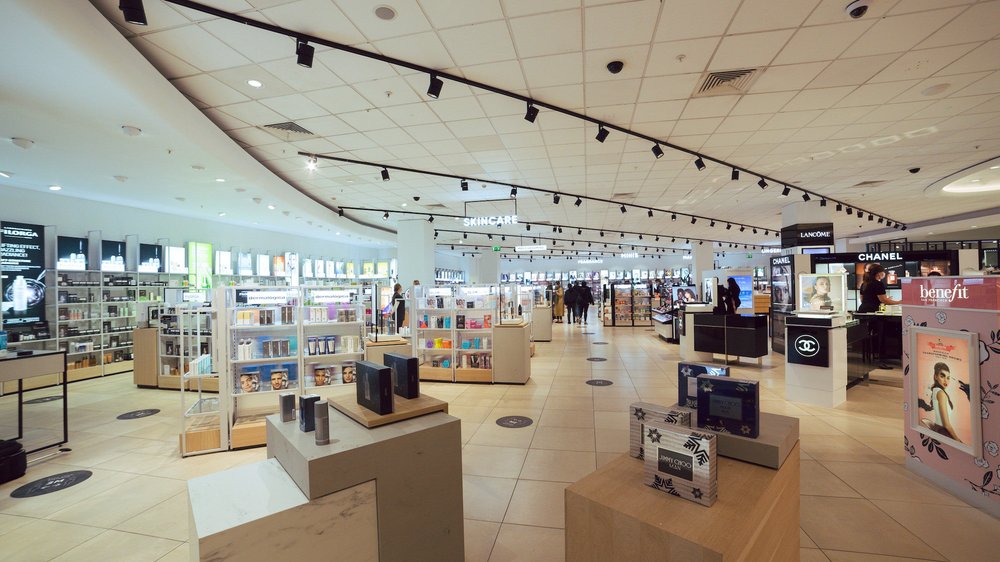Apr 1, 2021
Next delivered pre-tax profit that was down by more than half for its latest year. And
its sales fell in double-digits. But given the extraordinary circumstances of the 12-month period, it's clear that the company has proved to be one of the more successful businesses during the pandemic.

The year ended January 2021 saw sales falling ‘only’ around 17% to just over £3.6 billion, while pre-tax profit dropped to £342 million from £729 million (pre-IFRS 16) and net profit was down 51% to £290.6 million.
That's an undeniably strong result at a time when many of its peers were struggling to make money and it even managed to reduce debt when rivals had added to their debt loads.
It succeeded by taking quick action when the pandemic hit, but also by the fact that it's one of the best-run businesses in UK fashion. And its online strength (more than half of its sales were sourced online pre-pandemic) was key. It was “able to pick up a significant amount of the business lost in our stores by servicing customers online”. Digital will understandably remain a priority post-pandemic and it has accelerated its investment in this area over the past year.
The digital strength helped full-price sales fall just 15% year-on-year in FY 2020/21. Online sales rose 10% to £2.368 billion. But its retail stores saw sales falling 48% to £954.5 million. This meant online profitability rose 18% and physical stores profitability plummeted 226%.
So how has it fared at the start of the current financial year? Quite well, it seems, on multiple fronts. While the end of Lockdown 3 this month is two weeks later than it planned for, the profit lost has been offset by the benefit of the extension of business rates relief.
And in the first eight weeks of the year, online sales have been “stronger than expected”, rising 60%+ compared to two years ago. It has even raised its central profit guidance by £30 million to £700 million. There are very few fashion retailers with an extensive store estate that are able to lift profit guidance at present.
INCREASINGLY DIVERSE BUSINESS
We've already looked at some factors that helped it during the Covid period, but there were others. Next said the diversity of its product offer, across the Next brand and its third-party Label business, “has proved an invaluable asset during the pandemic”.
It meant that, when lockdown demand for adult fashion plummeted, “other products, more suited to lockdown life, were able to recover much of the loss”. Areas such as homewares, kidswear, sportswear and “stay-at-home basics all served to mitigate declines in adult's formal and casual clothing, footwear and accessories”.
The much-talked-about phenomenon of lower returns rates online due to the product categories that sold well during the pandemic was also a big plus. The categories that sold well traditionally have lower returns rates. But customers were also “generally being more selective at point of order”. So, although online full-price sales in the second half increased by 34%, units picked and despatched grew by just 13%.
One key factor in Next’s success, however, is that it’s a very different business from the clothing giant it once was.
The company illustrated the change by looking at the business in 2005 and its expectations for the end of the current financial year. In 2005, retail stores accounted for 77% of sales and in the current year, that should be only 29%, with online having flipped to be the top channel. And in 2005, clothing made up 90% of sales, compared to an expected 79% today. Third-party labels accounted for 0% in 2005, but should be 27% this year. And overseas online sales were also 0% back then, but will be 19% this year.

Not that it’s leaving the core Next fashion label behind and the number of unique items for sale on its website in the second half was 169% higher in Next Fashion compared to just five years earlier. But it was also 89% higher in Next Home, up from zero to 20,000 items in branded beauty and up 1,757% in Label brands.
With so much of the activity being online, we could be forgiven for thinking that stores are unimportant. That’s not so, however. But it’s being realistic about its estate and is “managing occupancy costs down to levels that can be supported by sales”. Last year 80 leases expired, it closed 18 branches and got rent reductions averaging 58% on the other 62.
It has also kept control of it staffing costs by cutting store staff numbers and improving efficiency with in-store staff helping make online sales more seamless. After all, pre-pandemic, online customers collected nearly half of their orders and brought back over 80% of returns via its physical shops.
Despite all this, it still thinks that like-for-like sales to its stores will decline by 20% this year, although the network remains profitable on that basis.
FOLLOWING THE MONEY
If anyone wants to know Next’s secret, the company was at pains to point out that its thinking isn’t about “a grand strategy” and “boardroom vision”. It said that “at no point did we set out a ‘Ten Year Plan’ to reach a given point. Instead, the business has followed the money, developing new ideas bottom up, drawing on innovations generated throughout the group — new product ranges, new businesses, new distribution channels, services, partnerships and markets. It is evolution in the true sense of the word, where small trials that fail, fail fast and those that succeed are developed as far as possible”.
Next added: “We are, at heart, a fashion and homeware business with excellent operations and strong financial disciplines. We have spent years honing those skills and the supporting infrastructure. It is these qualities that we aim to leverage and develop as we move forward. Fashion is risky and volatile; it involves taking on many fixed costs that stick in a difficult year. If our business is to ride out the slips and misfortunes inherent in our sector, we need to maintain margins healthy enough to get us through those difficult periods. Last year was about the most extreme stress test we could have had, and our resilience is testament to the financial disciplines that run through everything that we do.”

